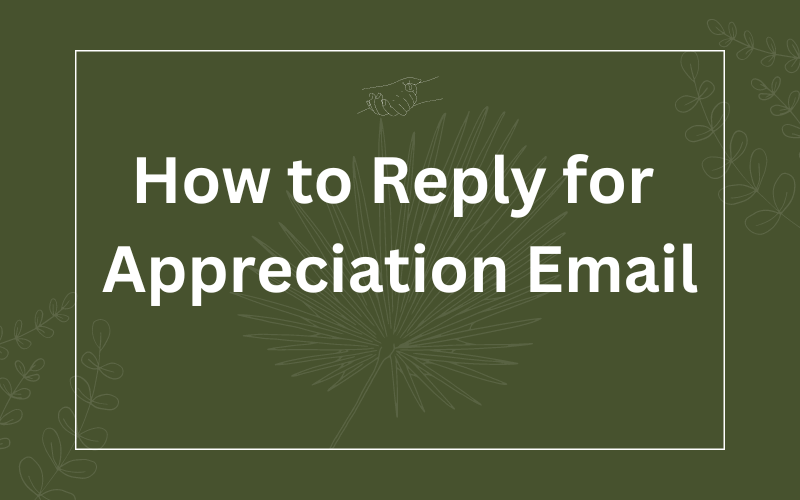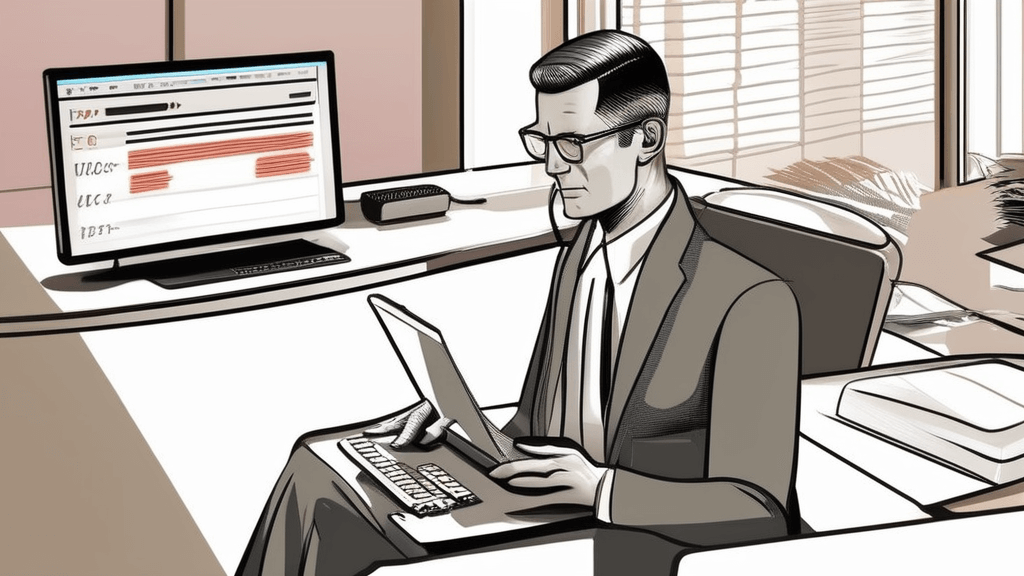
Replying to an email promptly and professionally is important. Start by acknowledging the sender and addressing the content of the email clearly and concisely.
When replying to an email, it’s crucial to maintain a polite and professional tone. This can help in ensuring effective communication and building positive relationships with the sender. In this guide, we will explore the best practices for crafting a well-written email response to ensure clear and effective communication in various professional settings.
Whether you are responding to a colleague, client, or business partner, these tips will help you compose a thoughtful and effective email reply that leaves a positive impression.
Setting The Right Tone
When it comes to replying to an email, setting the right tone is crucial. The tone you use in your response can greatly impact how the recipient perceives your message. To make sure you strike the right balance, it’s important to consider factors such as the polite greetings you use and the appropriate language you choose.
Using Polite Greetings
The way you start your email can set the tone for the entire conversation. Using polite greetings is an effective way to establish a positive and respectful tone from the very beginning. To ensure a friendly and professional tone, consider including greetings such as:
| Formal Greetings: | Dear Mr./Ms. [Last Name], |
| Less Formal Greetings: | Hello [First Name], |
| Informal Greetings: | Hi [First Name], |
Choosing the appropriate greeting depends on factors such as your relationship with the recipient and the level of formality required. By using polite greetings, you demonstrate respect and enhance the chances of a positive response.
Choosing Appropriate Language
The language you use in your email should be professional, clear, and concise. Avoid using complex vocabulary or jargon that the recipient may not understand. Instead, opt for simple and accessible language that conveys your message effectively. Consider the following tips when choosing your language:
- Be clear and specific, ensuring your message is easy to understand.
- Avoid using acronyms or technical terms unless necessary, as they can confuse the recipient.
- Show empathy and understanding by using friendly and supportive language.
- Refrain from using slang or informal expressions, as they may come across as unprofessional.
By using appropriate language, you create a positive impression and improve the overall effectiveness of your email.
Structuring Your Response
When replying to an email, it is essential to structure your response by following these guidelines: avoiding overused words and phrases, keeping sentences brief, creating unique and plagiarism-free content, using a variety of phrases, omitting a conclusion paragraph, and writing in an SEO-friendly and human-like style.
Organizing Your Content
“` Structuring your response to an email is crucial to ensure clarity and efficiency in communication. When addressing an email, it’s important to organize your content clearly and coherently. This not only aids in conveying your message effectively but also helps in maintaining professionalism. Here’s how you can ensure that your response is well-structured.
Addressing All Points
“` When replying to an email, it’s essential to ensure that you address all the points raised in the original message. This includes acknowledging any questions, concerns, or requests that the sender has communicated. Failure to address specific points may lead to misunderstandings or incomplete resolutions. Therefore, it’s crucial to meticulously go through the original email and respond to all the raised points in a clear and organized manner.
One effective way to organize your response is by utilizing a clear and concise structure. Consider dividing your email into the introduction, body, and conclusion. This will help in presenting your thoughts systematically and coherently.
Furthermore, use bullet points or numbered lists to address individual points raised in the original email. This not only enhances readability but also ensures that each point is given proper attention.
Additionally, consider using headers or bold text to distinguish between different topics within your response. This visual aid can assist the reader in navigating through the email and locating specific information more efficiently.
Conveying Clear Information
When replying to an email, it is essential to convey information clearly to ensure effective communication. Conveying clear information enables the recipient to understand your message promptly and reduces the likelihood of misunderstandings. There are specific techniques that can help you achieve this, including being succinct, avoiding ambiguity, and using clear language.
Being Succinct
Being succinct in your email replies means getting straight to the point and avoiding unnecessary elaboration. When composing your response, focus on highlighting the key information that the recipient needs to know. Use bullet points or numbered lists to structure your response and make it easier to read. By doing so, you help the recipient quickly grasp the important details without sifting through lengthy paragraphs.
Avoiding Ambiguity
Avoiding ambiguity in your email replies is crucial for ensuring clear communication. Avoid using vague language or unclear terms that could lead to misinterpretation. Instead, opt for specific language to convey your message. If needed, provide examples or explanations to clarify any potentially ambiguous points. This ensures that the recipient understands your message without any room for confusion.
Professional Email Etiquette
When it comes to professional email communication, adhering to proper email etiquette is essential. Following these guidelines will help you maintain a positive and professional image in your email correspondence. One crucial aspect of professional email etiquette is using proper sign-offs. Additionally, considering response time is also important to ensure effective communication. In this section, we will discuss these two elements in more detail.
Using Proper Sign-offs
Using proper sign-offs is crucial in professional email communication. Your sign-off conveys your professionalism and respect for the recipient. Here are a few examples of appropriate sign-offs:
- Your name followed by “Best regards”
- “Sincerely,” followed by your name
- “Thank you,” followed by your name
By using these sign-offs, you are sending your email on a polite and respectful note, leaving a positive impression on the recipient.
Considerate Response Time
Responding to emails promptly is a crucial aspect of professional email etiquette. It shows respect for the sender’s time and ensures effective communication. Here are a few tips to consider:
- Reply promptly: Aim to respond to emails within 24 hours, if possible. This demonstrates your professionalism and dedication to efficient communication.
- Set expectations: If you need more time to provide a thorough response, acknowledge the email and let the sender know when they can expect a detailed reply. This shows respect and keeps communication open.
- Be mindful of urgency: If an email is marked as urgent, prioritize it and respond as soon as possible. Urgent emails require immediate attention to meet the sender’s needs.
By following these guidelines, you will enhance your professional image and build strong relationships through effective email communication.
Handling Follow-ups And Closures
When it comes to replying to emails, it is crucial to handle follow-ups and closures with utmost professionalism. This ensures efficient communication and leaves a positive impression on your recipients. In this section, we will discuss two essential aspects of handling follow-ups and closures: acknowledging receipt and providing the next steps.
Acknowledging Receipt
Acknowledging receipt of an email is a simple yet impactful gesture that shows your responsiveness and professionalism. It assures the sender that their message has reached the right person and is being attended to. When acknowledging receipt, consider the following:
- Reply promptly: Ensure that you reply to the email within a reasonable timeframe, showing your efficiency and dedication.
- Express gratitude: Begin your reply by expressing gratitude for the sender’s email, thanking them for reaching out.
- Confirm receipt: Clearly state that you have received the email and mention any attachments or important details that were included.
- Provide reassurance: Assure the sender that their email will be reviewed and that they can expect a detailed response or further action from you.
Providing Next Steps
After acknowledging receipt, it is important to provide clear next steps to move the conversation forward. This ensures that everyone involved is on the same page and avoids any confusion or delays. Here’s how you can provide next steps:
- Summarize the email: Begin by summarizing the main points discussed in the email, highlighting any important information or requests.
- Suggest a plan of action: Based on the content of the email, propose a plan of action or outline the steps that will be taken to address the sender’s concerns or fulfill their requests.
- Set expectations: Communicate timelines and deadlines if applicable, so that the sender knows when they can expect a response or the completion of a task.
- Offer assistance: Conclude your email by offering further assistance or providing contact information in case the sender has any additional questions or requires further clarification.
By acknowledging receipt and providing the next steps in your email replies, you not only showcase professionalism and efficiency but also ensure effective communication and a smooth workflow. Implement these tips to handle follow-ups and closures in a way that leaves a lasting positive impression.
Frequently Asked Questions On How To Reply An Email
How Do I Write A Professional Email Reply?
To write a professional email reply, start with a courteous greeting, acknowledge the sender’s message, provide a clear and concise response, and end with a polite closing. Use proper grammar and punctuation, and avoid using jargon or slang. Keep the email focused and professional.
How Long Should An Email Reply Be?
An email reply should be brief and to the point. Aim to keep your response within 3-5 sentences, unless the nature of the email requires a more detailed response. Remember that the recipient may be busy, so be concise and prioritize the most important information.
Should I Reply To Every Email I Receive?
It is generally considered polite to reply to every email you receive, even if it’s just a brief acknowledgment. However, use your judgment to determine if a response is necessary. If an email doesn’t require a reply or is spam, you can choose not to respond.
What Should I Do If I Can’t Reply To An Email Immediately?
If you can’t reply to an email immediately, it’s a good practice to send a short acknowledgment to let the sender know you received their message. In your response, mention that you will provide a detailed reply as soon as possible.
This shows professionalism and maintains good communication.
Conclusion
Mastering the art of replying to emails is essential for effective communication in today’s digital age. By following the simple steps outlined in this blog post, you can ensure your email responses are clear, concise, and professional. Remember to address the sender by name, use appropriate language and tone, and proofread your message before hitting send.
With these techniques, you’ll be able to craft thoughtful and impactful replies that leave a lasting impression. Keep practicing and refining your skills, and you’ll become a master of email communication in no time.


